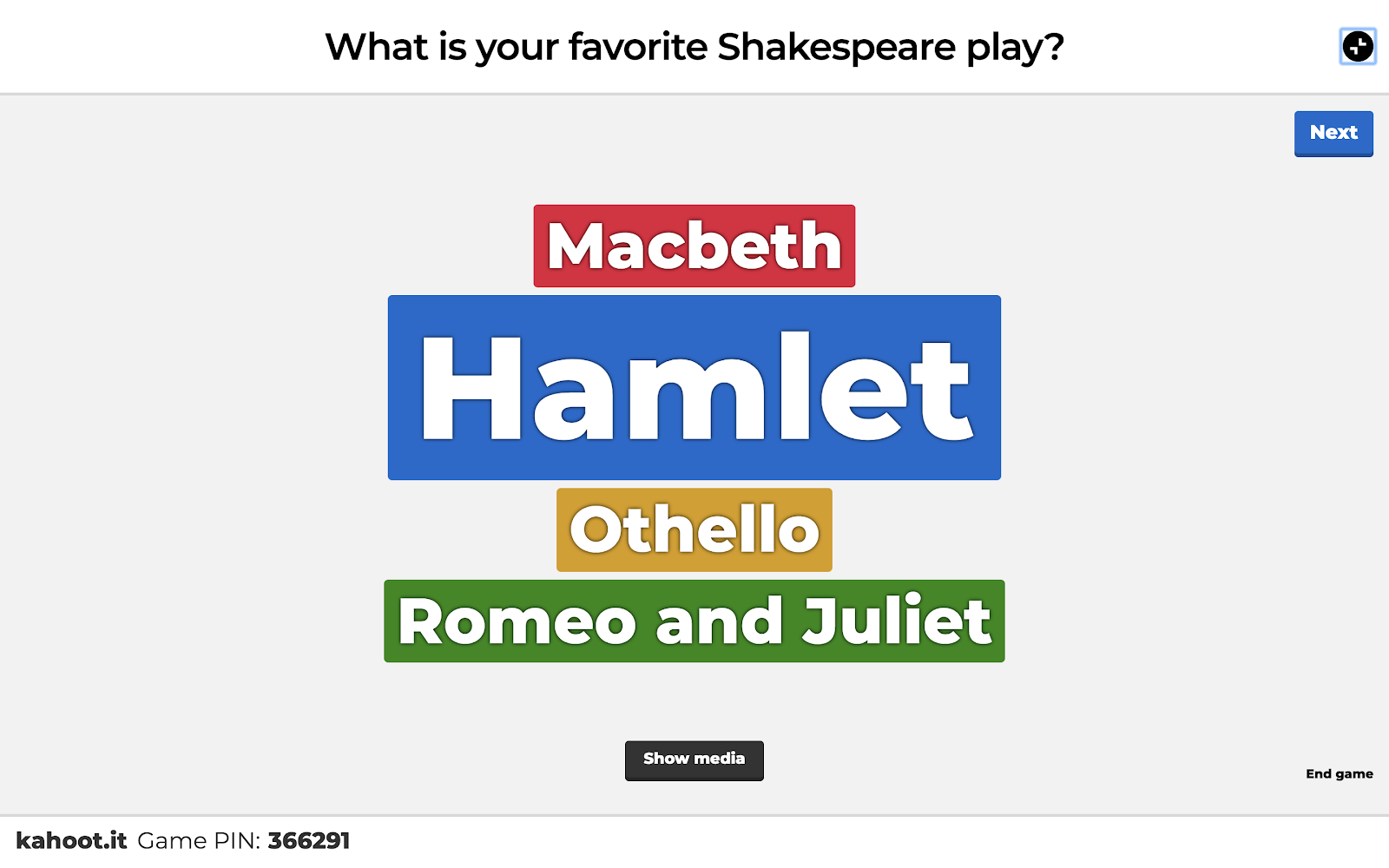“We started using game-based learning to help students drill facts and remember things. Now with word cloud, we use it to expand into more nuanced discussions.” – read how Bailey Betik, graduate instructor at Emory University in Atlanta, makes the most of Kahoot! in a British literature course.
Fun is something everyone needs. If you don’t have some element of fun to what you’re doing, you’re going to burn out. Students, especially in higher education, have a lot of pressure on them these days. Bringing fun into learning can relieve some of that pressure, and help students perform better.
I noticed that students always remember something fun and interactive more than lecture-based material. When I taught English to 10th graders, we used Kahoot! to prepare for standardized testing and in review sessions, both inside and outside the classroom. It was very well received by learners and efficient, too. So, when I joined Emory University as a graduate instructor, I didn’t hesitate to bring Kahoot! on board there.
Lower pressure – better knowledge retention
At Emory, I co-taught a survey class on British literature last semester. We had to cover lots of authors and topics (not only literature, but history, too) at a rapid speed. Kahoot! was very useful for reviewing content and lightening up heavy topics. Engaging in a fun, interactive activity is way more efficient when it comes to remembering content, compared to just listening to the lecturer.
Students enjoy Kahoot! so much that they even ask for games to play at home for review. While playing, students forget the stress and feel energized. Even entering funny nicknames is like a mini-competition in creativity and wittiness.






